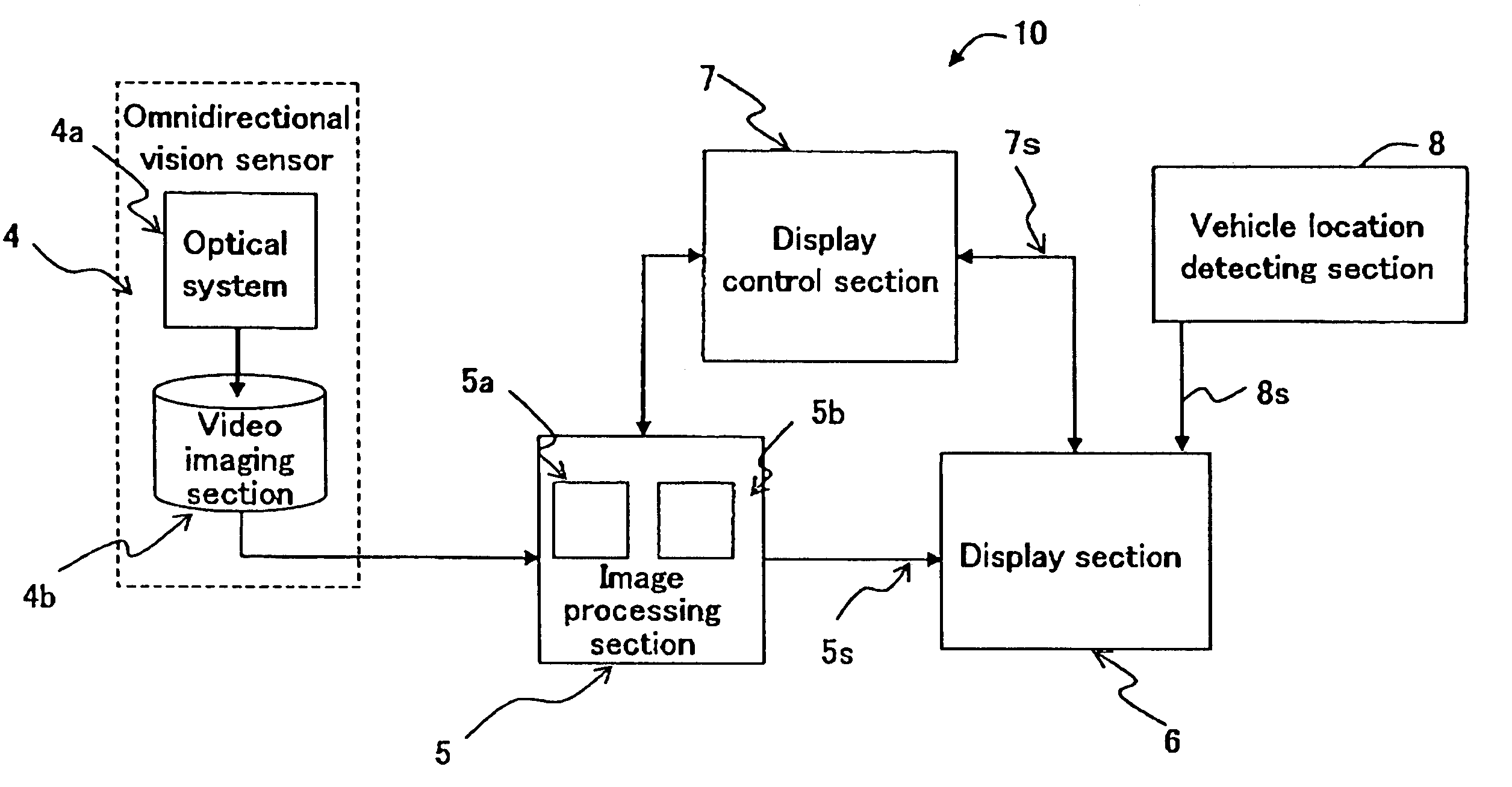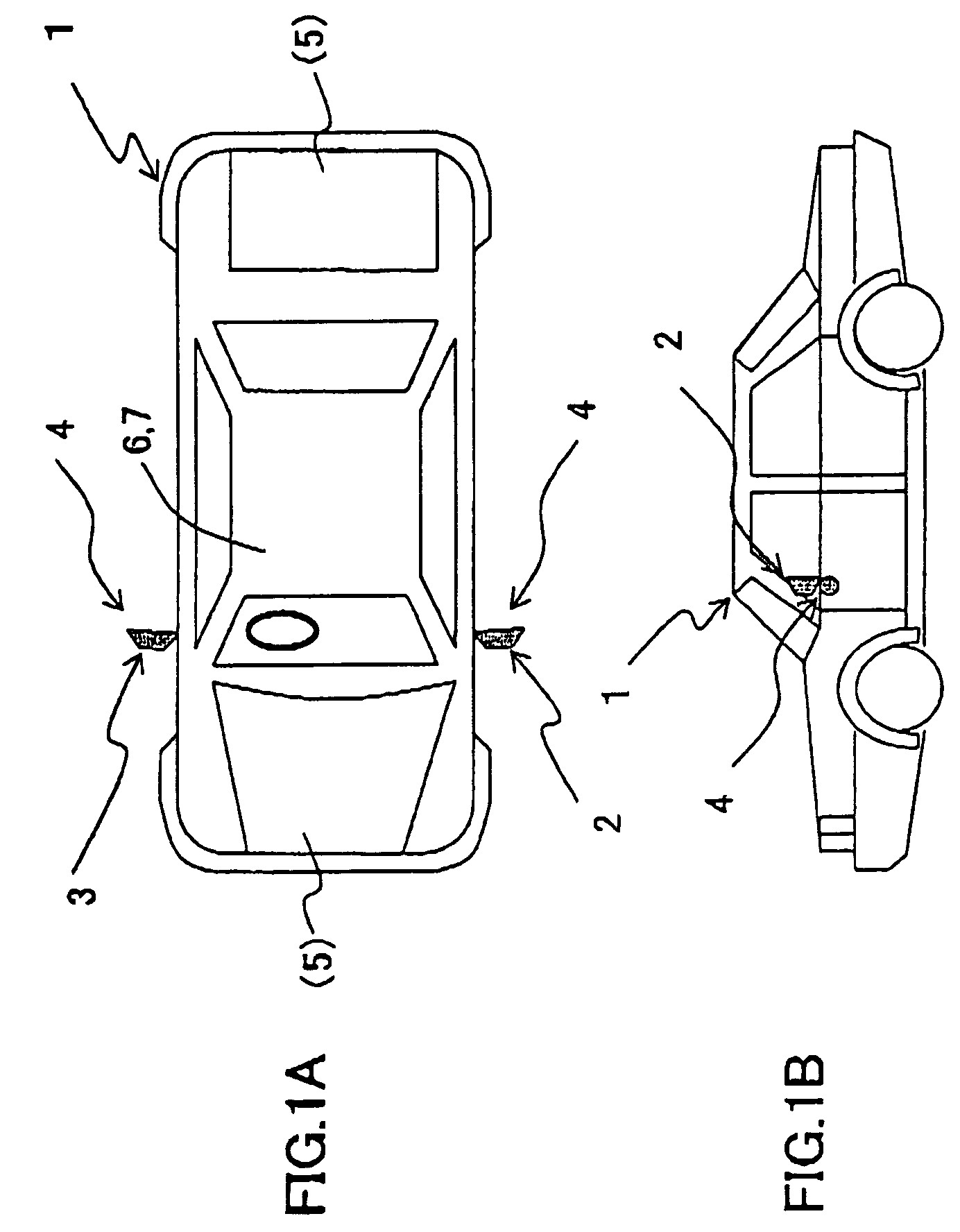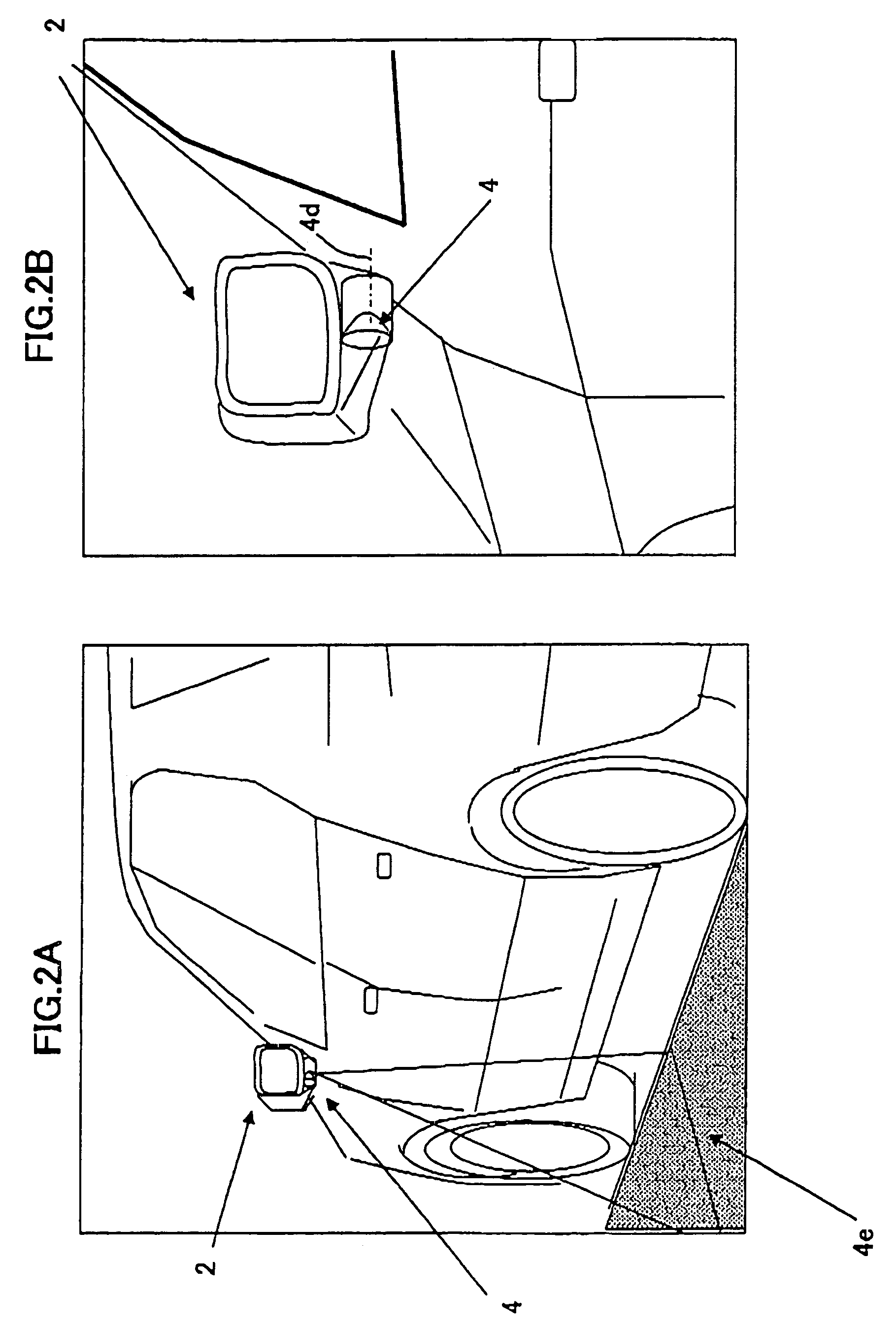Surrounding surveillance apparatus and mobile body
a technology of surveillance apparatus and mobile body, which is applied in the field of surround-based surveillance system, can solve the problems of rear-end crash, narrow view of vehicle drivers and pedestrians, and increase in traffic accidents, so as to prevent collision or confirm safety more accurately, the effect of preventing collision or confirming safety
- Summary
- Abstract
- Description
- Claims
- Application Information
AI Technical Summary
Benefits of technology
Problems solved by technology
Method used
Image
Examples
Embodiment Construction
[0056]Hereinafter, the present invention will be described by way of illustrative examples with reference to the accompanying drawings. Particularly, the present invention is applied to a vehicle (passenger vehicle) in the following embodiments.
[0057]FIG. 1A is a top view showing a passenger vehicle carrying a vehicle surrounding surveillance apparatus according to an embodiment of the present invention. FIG. 1 is a side view thereof. FIG. 2A is a diagram showing an omnidirectional vision sensor according to an embodiment of the present invention which is attached to a lower portion of the outside rearview mirror of FIGS. 1A and 1B. FIG. 2B is a partially enlarged view of FIG. 2A.
[0058]Referring to FIGS. 1A, 1B, 2A and 2B, the omnidirectional vision sensor 4 is provided at a lower portion of each of left- and right-hand door mirrors 2 and 3 (outside rearview mirrors) of the vehicle (passenger vehicle) 1 with an optical axis 4d (FIG. 2B) of the omnidirectional vision sensor 4 being h...
PUM
 Login to View More
Login to View More Abstract
Description
Claims
Application Information
 Login to View More
Login to View More - R&D
- Intellectual Property
- Life Sciences
- Materials
- Tech Scout
- Unparalleled Data Quality
- Higher Quality Content
- 60% Fewer Hallucinations
Browse by: Latest US Patents, China's latest patents, Technical Efficacy Thesaurus, Application Domain, Technology Topic, Popular Technical Reports.
© 2025 PatSnap. All rights reserved.Legal|Privacy policy|Modern Slavery Act Transparency Statement|Sitemap|About US| Contact US: help@patsnap.com



